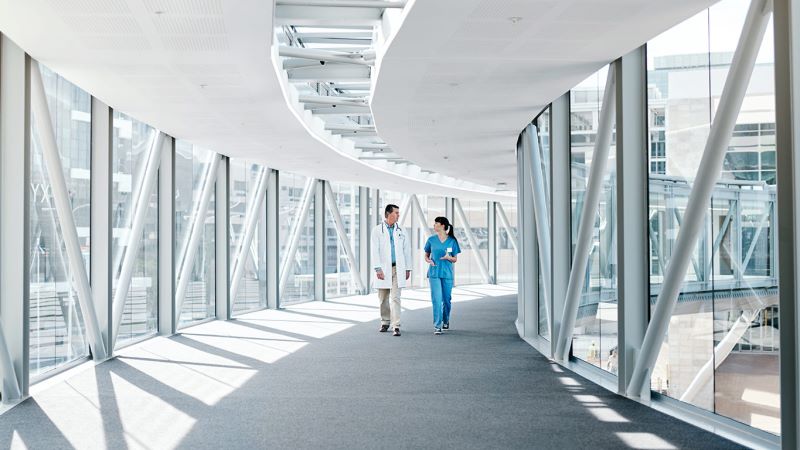Making the leap: How can bold leadership propel the built environment towards net zero?
We know how pivotal our built environment is to creating a more sustainable world and mitigating the impact of climate change. Though the industry has made many effective and incremental changes in reducing carbon over the last few years, the Climate Change Committee’s 6th Carbon Budget still shows that the construction industry is responsible for 43% of global carbon emissions. We’re now at an inflection point where wholesale changes, brought about through collaboration between industry, government, and financial institutions, are the only way to meet the speed and scale of the climate crisis. Our Group Chairman and Chief Executive, Mark Reynolds reflects on the ambitious decisions needed to deliver a Net Zero built environment.
Where we are today
At Mace, our journey to Net Zero really accelerated with the creation of our 2026 business plan, launched in 2021. Within this, we established the pursuit of a sustainable world as one of our three strategic priorities. This was followed by targets for reducing our own operational - and our clients' embodied - carbon. We are aiming to reduce client carbon on our projects by 10 million tonnes by 2026. Decarbonisation in the Built Environment is enabled by the energy transition, so we’ve been working very closely with Great British Nuclear and Governments around the world on their plans for low carbon energy. Closer to home we’ve been looking at how our direct construction and delivery partner impact can really help reduce emissions through changes to transport (transition to zero emission vehicles), buildings (retrofit and operational energy improvements) and construction activity itself (zero diesel sites and improving our productivity and waste).
Whilst these changes have been substantial, the only way for us to reduce emissions in an affordable way will be to unlock innovation. Ensuring this happens requires a change of mindset that captures the hearts and minds of business leaders, not only to understand the importance of greening the built environment, but the urgency too.
The role of legislation
When discussing who is most responsible for leading the charge on sustainability, the burden is often levelled at governments. Indeed our 2023 Carbon Survey – a study of over 3000 business leaders’ approaches to the carbon challenge – found that 44% of leaders believe that policymakers are the most responsible group for accelerating decarbonisation. This reflects a clear desire for guidance and the mandate to decarbonise that only regulation can provide. We’re seeing examples of transformative standards such as PAS 2080: 2023, which is redefining the carbon management process across the lifecycle of buildings and infrastructure alongside the UK Net Zero Carbon Buildings Standard for all types of Buildings. Crucially, both are designed to engage the entire value chain.
This is imperative as government alone cannot bring about Net Zero – there must be deep collaboration between law makers, consultants, tier 1’s, and the supply chain. Doing so will deliver a legislative framework that satisfies the priorities of both groups and a structured roadmap, with key incentives for outside investment.
Creating a Carbon fluent workforce
Another pivotal aspect of ensuring Net Zero is achieved is to sufficiently upskill the current and future workforce and build literacy around sustainability. We are now going a level beyond upskilling our leadership, and instead developing a framework for Carbon Fluency among people at all levels of our organisation. The priority is to help everyone understand how they can own their impact, whether they are project managers, engineers, lawyers, marketers, and everything in between.
The Construction Leadership Council’s CO2nstructZero initiative and the Green Construction Board provide forums for the industry to collaborate across the supply chain as well as reference material for the industry to raise awareness and promote best practice.
All of us can have a greater effect on reaching Net Zero, through our professional skillset and decision making.
The challenge ahead
Sustainability is becoming a busier and more sophisticated space to navigate. We’ve already seen carbon neutrality give way to net zero carbon, with offsets and mitigation increasingly coming under scrutiny. Now, climate resilience, biodiversity and the regeneration of our natural habitats are also becoming integral to sustainable development. To progress and thrive, the built environment must come forward together.











